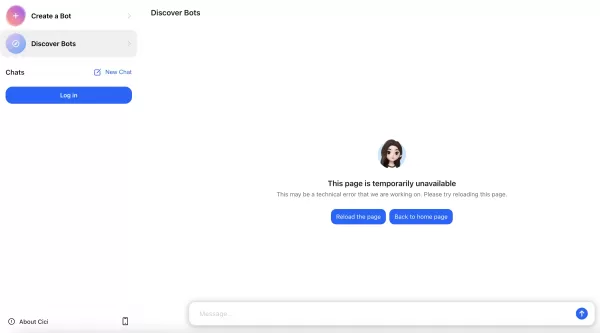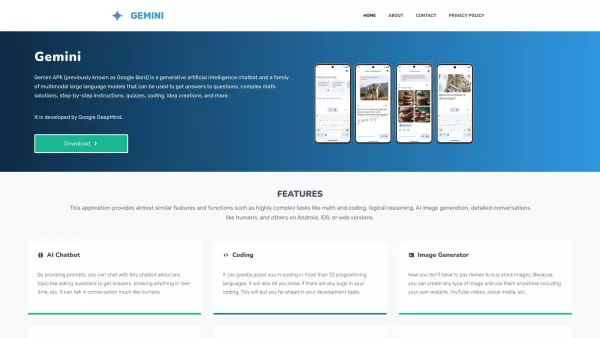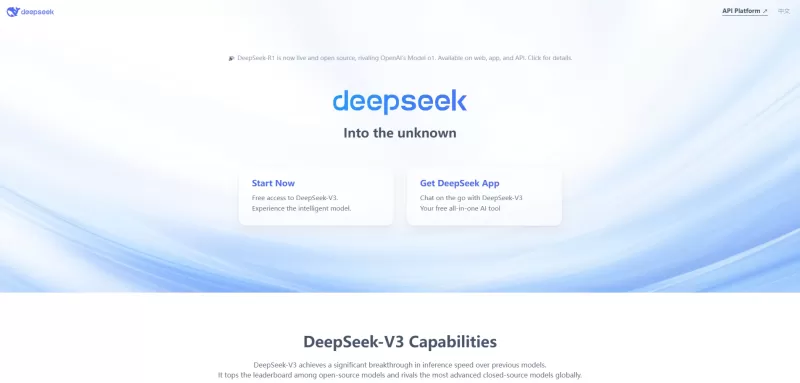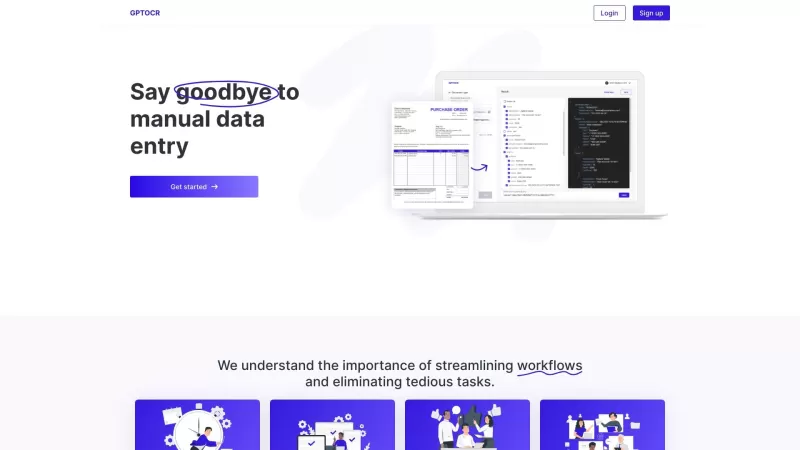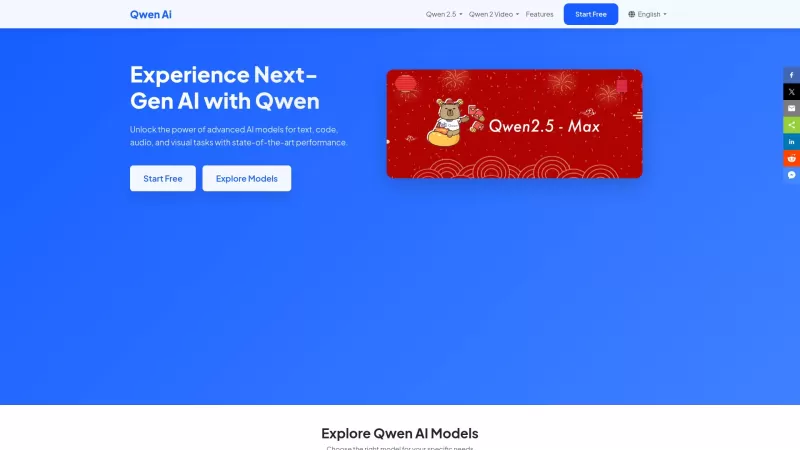Top 10 Python Libraries for Data Science Revealed
Python has skyrocketed in popularity, becoming the go-to programming language for data science enthusiasts and professionals alike. Its ease of learning makes it an ideal choice for beginners, while its robust capabilities cater to experts. Data scientists rely on Python daily, drawn not only by its user-friendliness but also by its open-source nature, object-oriented programming, and high-performance capabilities.
However, what truly sets Python apart in the realm of data science is its extensive array of libraries, each designed to tackle specific challenges and streamline complex processes. Let's dive into the top 10 Python libraries that are making waves in the world of data science:
1. [TensorFlow](https://www.tensorflow.org)
Kicking off our list is TensorFlow, a powerhouse developed by Google's Brain Team. Whether you're just starting out or you're a seasoned pro, TensorFlow has something for everyone. It boasts a plethora of flexible tools, libraries, and a vibrant community. With around 35,000 comments and over 1,500 contributors, TensorFlow is all about high-performance numerical computations. Its applications span various scientific fields, focusing on tensors—those nifty, partially defined computational objects that ultimately produce a value. It's particularly handy for tasks like speech and image recognition, text-based applications, time-series analysis, and video detection.
Some standout features of TensorFlow include:
- Reducing error in neural machine learning by 50 to 60 percent
- Excellent library management
- Flexible architecture and framework
- Compatibility with various computational platforms
2. [SciPy](https://scipy.org/)
Next up is SciPy, a free and open-source gem that's perfect for high-level computations. With a community of hundreds of contributors, SciPy excels in scientific and technical computing. It's built on Numpy and transforms its functions into user-friendly, scientific tools. Whether you're dealing with multidimensional image operations, optimization algorithms, or linear algebra, SciPy has you covered for large dataset computations.
Key features of SciPy include:
- High-level commands for data manipulation and visualization
- Built-in functions for solving differential equations
- Multidimensional image processing
- Computation on large datasets
3. [Pandas](https://pandas.pydata.org/)
Pandas is another crowd favorite, renowned for its powerful data manipulation and analysis tools. It's equipped with its own data structures, like Series and DataFrames, which are both fast and efficient for managing and exploring data. Whether you're into general data wrangling, cleaning, statistics, finance, or even linear regression, Pandas has a wide range of applications.
Highlights of Pandas include:
- Ability to create and run custom functions across data series
- High-level abstraction
- Advanced structures and manipulation tools
- Merging and joining datasets
4. [NumPy](https://numpy.org/)
NumPy is your go-to for large multi-dimensional array and matrix processing. It's packed with high-level mathematical functions, making it a go-to for efficient scientific computations. As a general-purpose array-processing package, NumPy offers high-performance arrays and tools, tackling slowness head-on with efficient multidimensional arrays and operations.
NumPy's key features are:
- Fast, precompiled functions for numerical routines
- Support for object-oriented approaches
- Array-oriented computing for efficiency
- Data cleaning and manipulation
5. Matplotlib
Matplotlib is your plotting powerhouse, supported by a community of over 700 contributors. It's perfect for data visualization, producing graphs and plots that can be embedded into applications via an object-oriented API. Whether you're analyzing variable correlations, visualizing model confidence intervals, exploring data distribution, or detecting outliers with scatter plots, Matplotlib is incredibly versatile.
Matplotlib's features include:
- Can serve as a MATLAB replacement
- Free and open-source
- Supports numerous backends and output types
- Low memory consumption
6. [Scikit-learn](https://scikit-learn.org/stable/)
Scikit-learn is a gem for machine learning enthusiasts. This library integrates seamlessly with SciPy and NumPy, offering a variety of algorithms for classification, regression, clustering, and more. From gradient boosting to random forests, Scikit-learn is your one-stop shop for end-to-end machine learning solutions.
Key features of Scikit-learn are:
- Data classification and modeling
- Data preprocessing
- Model selection
- End-to-end machine learning algorithms
7. [Keras](https://keras.io/)
Keras is a favorite among those diving into deep learning and neural networks. It supports both TensorFlow and Theano backends, making it a versatile choice for beginners. This open-source library equips you with tools for model construction, dataset analysis, and graph visualization. It's modular, extensible, and offers a wide range of data types. Plus, Keras provides pre-trained models that you can use for predictions or feature extraction without the need to train your own.
Keras features include:
- Developing neural layers
- Data pooling
- Activation and cost functions
- Deep learning and machine learning models
8. [Scrapy](https://scrapy.org)
Scrapy stands out as a fast and open-source web crawling framework. It's perfect for extracting data from web pages using XPath-based selectors. Whether you're building programs to retrieve structured data from the web, gathering data from APIs, or scaling large crawlers, Scrapy is lightweight and robust.
Scrapy's main features are:
- Lightweight and open-source
- Robust web scraping capabilities
- Extracts data using XPath selectors
- Built-in support
9. [PyTorch](https://pytorch.org)
PyTorch, developed by Facebook's AI research team, is a scientific computing package that leverages the power of graphics processing units. It's highly favored for its flexibility and speed in deep learning research. Whether you're working with simplified processors or GPUs, PyTorch delivers high-speed execution even with heavy graphs.
PyTorch's features include:
- Control over datasets
- High flexibility and speed
- Development of deep learning models
- Statistical distribution and operations
10. BeautifulSoup
Rounding out our list is BeautifulSoup, a staple for web crawling and data scraping. It's perfect for collecting data from websites that don't offer proper CSV or API access. BeautifulSoup simplifies the process of scraping and arranging data into the required format. Plus, it's supported by an active community and comes with comprehensive documentation.
BeautifulSoup's features include:
- Community support
- Web crawling and data scraping
- User-friendly interface
- Collects data without proper CSV or API
Related article
 Zoom Launches VR Video Calls with New Meta Quest App
Zoom Launches Dedicated Quest VR App
Zoom has introduced a standalone virtual reality application for Meta Quest headsets, enabling users to participate in or host meetings while represented by their Meta Avatar. This marks a significant upgrade fr
Zoom Launches VR Video Calls with New Meta Quest App
Zoom Launches Dedicated Quest VR App
Zoom has introduced a standalone virtual reality application for Meta Quest headsets, enabling users to participate in or host meetings while represented by their Meta Avatar. This marks a significant upgrade fr
 Tech Coalition Objects to OpenAI's Departure From Nonprofit Origins
An influential coalition of artificial intelligence experts, including former OpenAI staff members, has raised significant concerns about the organization's departure from its founding nonprofit principles.
Open Governance Concerns
A formal letter s
Tech Coalition Objects to OpenAI's Departure From Nonprofit Origins
An influential coalition of artificial intelligence experts, including former OpenAI staff members, has raised significant concerns about the organization's departure from its founding nonprofit principles.
Open Governance Concerns
A formal letter s
 Pinterest Takes Action to Address AI-Generated Content Overload
Pinterest is implementing new transparency measures to help users distinguish and minimize exposure to artificial content. The visual discovery platform is introducing automatic labeling for images identified as AI-generated or manipulated, accompani
Comments (34)
0/200
Pinterest Takes Action to Address AI-Generated Content Overload
Pinterest is implementing new transparency measures to help users distinguish and minimize exposure to artificial content. The visual discovery platform is introducing automatic labeling for images identified as AI-generated or manipulated, accompani
Comments (34)
0/200
![RaymondAdams]() RaymondAdams
RaymondAdams
 August 14, 2025 at 3:01:00 PM EDT
August 14, 2025 at 3:01:00 PM EDT
This list of Python libraries is super helpful for data science newbies like me! 🐍 I’m excited to try Pandas and NumPy, but I wonder which one’s best for quick data cleaning? Any tips?


 0
0
![RalphEvans]() RalphEvans
RalphEvans
 August 12, 2025 at 9:00:59 AM EDT
August 12, 2025 at 9:00:59 AM EDT
Python's rise in data science is wild! These top 10 libraries sound super powerful, but I wonder which one’s the real game-changer for beginners? 🤔 Gotta try them out!


 0
0
![ElijahCollins]() ElijahCollins
ElijahCollins
 August 11, 2025 at 1:01:02 PM EDT
August 11, 2025 at 1:01:02 PM EDT
Python's rise in data science is wild! These top 10 libraries sound super powerful—definitely gonna check out pandas and numpy for my next project. 🐍💻


 0
0
![StevenWilson]() StevenWilson
StevenWilson
 August 6, 2025 at 7:01:00 PM EDT
August 6, 2025 at 7:01:00 PM EDT
Python's rise in data science is wild! These top 10 libraries sound like a treasure trove for crunching numbers. I’m curious, which one’s the best for beginners to start with? 🧑💻


 0
0
![BruceSmith]() BruceSmith
BruceSmith
 April 23, 2025 at 11:12:22 PM EDT
April 23, 2025 at 11:12:22 PM EDT
¡Esta lista de bibliotecas de Python para ciencias de datos es un salvavidas! He estado usando algunas de ellas y han hecho que mi análisis de datos sea mucho más fluido. Solo desearía que hubiera más información detallada sobre cómo usarlas de manera efectiva. Aún así, un gran recurso! 😊


 0
0
![KennethKing]() KennethKing
KennethKing
 April 23, 2025 at 4:03:20 AM EDT
April 23, 2025 at 4:03:20 AM EDT
Essa lista de bibliotecas Python para ciência de dados é um salva-vidas! Tenho usado algumas delas e elas tornaram minha análise de dados muito mais suave. Só gostaria que tivesse mais informações detalhadas sobre como usá-las de forma eficaz. Ainda assim, um ótimo recurso! 😊


 0
0
Python has skyrocketed in popularity, becoming the go-to programming language for data science enthusiasts and professionals alike. Its ease of learning makes it an ideal choice for beginners, while its robust capabilities cater to experts. Data scientists rely on Python daily, drawn not only by its user-friendliness but also by its open-source nature, object-oriented programming, and high-performance capabilities.
However, what truly sets Python apart in the realm of data science is its extensive array of libraries, each designed to tackle specific challenges and streamline complex processes. Let's dive into the top 10 Python libraries that are making waves in the world of data science:
1. [TensorFlow](https://www.tensorflow.org)
Kicking off our list is TensorFlow, a powerhouse developed by Google's Brain Team. Whether you're just starting out or you're a seasoned pro, TensorFlow has something for everyone. It boasts a plethora of flexible tools, libraries, and a vibrant community. With around 35,000 comments and over 1,500 contributors, TensorFlow is all about high-performance numerical computations. Its applications span various scientific fields, focusing on tensors—those nifty, partially defined computational objects that ultimately produce a value. It's particularly handy for tasks like speech and image recognition, text-based applications, time-series analysis, and video detection.
Some standout features of TensorFlow include:
- Reducing error in neural machine learning by 50 to 60 percent
- Excellent library management
- Flexible architecture and framework
- Compatibility with various computational platforms
2. [SciPy](https://scipy.org/)
Next up is SciPy, a free and open-source gem that's perfect for high-level computations. With a community of hundreds of contributors, SciPy excels in scientific and technical computing. It's built on Numpy and transforms its functions into user-friendly, scientific tools. Whether you're dealing with multidimensional image operations, optimization algorithms, or linear algebra, SciPy has you covered for large dataset computations.
Key features of SciPy include:
- High-level commands for data manipulation and visualization
- Built-in functions for solving differential equations
- Multidimensional image processing
- Computation on large datasets
3. [Pandas](https://pandas.pydata.org/)
Pandas is another crowd favorite, renowned for its powerful data manipulation and analysis tools. It's equipped with its own data structures, like Series and DataFrames, which are both fast and efficient for managing and exploring data. Whether you're into general data wrangling, cleaning, statistics, finance, or even linear regression, Pandas has a wide range of applications.
Highlights of Pandas include:
- Ability to create and run custom functions across data series
- High-level abstraction
- Advanced structures and manipulation tools
- Merging and joining datasets
4. [NumPy](https://numpy.org/)
NumPy is your go-to for large multi-dimensional array and matrix processing. It's packed with high-level mathematical functions, making it a go-to for efficient scientific computations. As a general-purpose array-processing package, NumPy offers high-performance arrays and tools, tackling slowness head-on with efficient multidimensional arrays and operations.
NumPy's key features are:
- Fast, precompiled functions for numerical routines
- Support for object-oriented approaches
- Array-oriented computing for efficiency
- Data cleaning and manipulation
5. Matplotlib
Matplotlib is your plotting powerhouse, supported by a community of over 700 contributors. It's perfect for data visualization, producing graphs and plots that can be embedded into applications via an object-oriented API. Whether you're analyzing variable correlations, visualizing model confidence intervals, exploring data distribution, or detecting outliers with scatter plots, Matplotlib is incredibly versatile.
Matplotlib's features include:
- Can serve as a MATLAB replacement
- Free and open-source
- Supports numerous backends and output types
- Low memory consumption
6. [Scikit-learn](https://scikit-learn.org/stable/)
Scikit-learn is a gem for machine learning enthusiasts. This library integrates seamlessly with SciPy and NumPy, offering a variety of algorithms for classification, regression, clustering, and more. From gradient boosting to random forests, Scikit-learn is your one-stop shop for end-to-end machine learning solutions.
Key features of Scikit-learn are:
- Data classification and modeling
- Data preprocessing
- Model selection
- End-to-end machine learning algorithms
7. [Keras](https://keras.io/)
Keras is a favorite among those diving into deep learning and neural networks. It supports both TensorFlow and Theano backends, making it a versatile choice for beginners. This open-source library equips you with tools for model construction, dataset analysis, and graph visualization. It's modular, extensible, and offers a wide range of data types. Plus, Keras provides pre-trained models that you can use for predictions or feature extraction without the need to train your own.
Keras features include:
- Developing neural layers
- Data pooling
- Activation and cost functions
- Deep learning and machine learning models
8. [Scrapy](https://scrapy.org)
Scrapy stands out as a fast and open-source web crawling framework. It's perfect for extracting data from web pages using XPath-based selectors. Whether you're building programs to retrieve structured data from the web, gathering data from APIs, or scaling large crawlers, Scrapy is lightweight and robust.
Scrapy's main features are:
- Lightweight and open-source
- Robust web scraping capabilities
- Extracts data using XPath selectors
- Built-in support
9. [PyTorch](https://pytorch.org)
PyTorch, developed by Facebook's AI research team, is a scientific computing package that leverages the power of graphics processing units. It's highly favored for its flexibility and speed in deep learning research. Whether you're working with simplified processors or GPUs, PyTorch delivers high-speed execution even with heavy graphs.
PyTorch's features include:
- Control over datasets
- High flexibility and speed
- Development of deep learning models
- Statistical distribution and operations
10. BeautifulSoup
Rounding out our list is BeautifulSoup, a staple for web crawling and data scraping. It's perfect for collecting data from websites that don't offer proper CSV or API access. BeautifulSoup simplifies the process of scraping and arranging data into the required format. Plus, it's supported by an active community and comes with comprehensive documentation.
BeautifulSoup's features include:
- Community support
- Web crawling and data scraping
- User-friendly interface
- Collects data without proper CSV or API
 Zoom Launches VR Video Calls with New Meta Quest App
Zoom Launches Dedicated Quest VR App
Zoom has introduced a standalone virtual reality application for Meta Quest headsets, enabling users to participate in or host meetings while represented by their Meta Avatar. This marks a significant upgrade fr
Zoom Launches VR Video Calls with New Meta Quest App
Zoom Launches Dedicated Quest VR App
Zoom has introduced a standalone virtual reality application for Meta Quest headsets, enabling users to participate in or host meetings while represented by their Meta Avatar. This marks a significant upgrade fr
 Pinterest Takes Action to Address AI-Generated Content Overload
Pinterest is implementing new transparency measures to help users distinguish and minimize exposure to artificial content. The visual discovery platform is introducing automatic labeling for images identified as AI-generated or manipulated, accompani
Pinterest Takes Action to Address AI-Generated Content Overload
Pinterest is implementing new transparency measures to help users distinguish and minimize exposure to artificial content. The visual discovery platform is introducing automatic labeling for images identified as AI-generated or manipulated, accompani
 August 14, 2025 at 3:01:00 PM EDT
August 14, 2025 at 3:01:00 PM EDT
This list of Python libraries is super helpful for data science newbies like me! 🐍 I’m excited to try Pandas and NumPy, but I wonder which one’s best for quick data cleaning? Any tips?


 0
0
 August 12, 2025 at 9:00:59 AM EDT
August 12, 2025 at 9:00:59 AM EDT
Python's rise in data science is wild! These top 10 libraries sound super powerful, but I wonder which one’s the real game-changer for beginners? 🤔 Gotta try them out!


 0
0
 August 11, 2025 at 1:01:02 PM EDT
August 11, 2025 at 1:01:02 PM EDT
Python's rise in data science is wild! These top 10 libraries sound super powerful—definitely gonna check out pandas and numpy for my next project. 🐍💻


 0
0
 August 6, 2025 at 7:01:00 PM EDT
August 6, 2025 at 7:01:00 PM EDT
Python's rise in data science is wild! These top 10 libraries sound like a treasure trove for crunching numbers. I’m curious, which one’s the best for beginners to start with? 🧑💻


 0
0
 April 23, 2025 at 11:12:22 PM EDT
April 23, 2025 at 11:12:22 PM EDT
¡Esta lista de bibliotecas de Python para ciencias de datos es un salvavidas! He estado usando algunas de ellas y han hecho que mi análisis de datos sea mucho más fluido. Solo desearía que hubiera más información detallada sobre cómo usarlas de manera efectiva. Aún así, un gran recurso! 😊


 0
0
 April 23, 2025 at 4:03:20 AM EDT
April 23, 2025 at 4:03:20 AM EDT
Essa lista de bibliotecas Python para ciência de dados é um salva-vidas! Tenho usado algumas delas e elas tornaram minha análise de dados muito mais suave. Só gostaria que tivesse mais informações detalhadas sobre como usá-las de forma eficaz. Ainda assim, um ótimo recurso! 😊


 0
0

